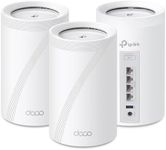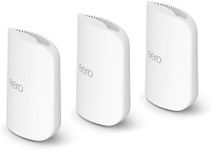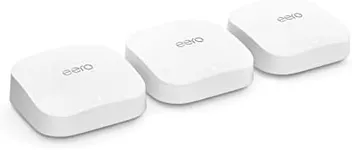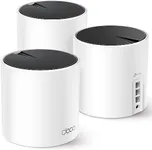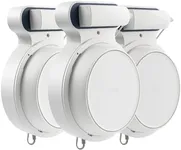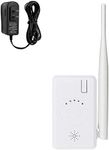Buying Guide for the Best Mesh Wi Fi Systems
Choosing the right mesh Wi-Fi system can significantly improve your internet experience by providing seamless coverage throughout your home or office. Mesh Wi-Fi systems consist of multiple devices that work together to create a single, unified network, eliminating dead zones and ensuring a strong, consistent signal everywhere. To pick the best mesh Wi-Fi system for your needs, it's important to understand the key specifications and how they relate to your specific requirements.Coverage AreaCoverage area refers to the total square footage that the mesh Wi-Fi system can effectively cover. This is important because it determines how well the system will eliminate dead zones in your home or office. Coverage areas can range from small apartments to large multi-story houses. If you live in a small apartment, a system with a smaller coverage area will suffice. For larger homes, look for systems that offer extensive coverage to ensure every corner of your space has a strong signal.
Number of NodesNodes are the individual units that make up the mesh Wi-Fi system. The number of nodes you need depends on the size and layout of your space. More nodes can provide better coverage and more reliable connections, especially in larger or more complex layouts. For a small home, two nodes might be enough, while larger homes or those with multiple floors may require three or more nodes to ensure comprehensive coverage.
SpeedSpeed refers to the maximum data transfer rate that the mesh Wi-Fi system can handle, usually measured in megabits per second (Mbps). This is crucial for activities like streaming, gaming, and video conferencing. Systems with higher speeds are better suited for households with multiple users and devices. If you have basic internet needs, a lower speed system might be sufficient. However, for high-demand activities, opt for a system with higher speeds to ensure smooth performance.
Band SupportBand support indicates whether the system operates on single, dual, or tri-band frequencies. Dual-band systems use two frequencies (2.4 GHz and 5 GHz), while tri-band systems add an additional 5 GHz band. More bands can help manage network traffic more efficiently, reducing congestion and improving performance. If you have many devices or engage in high-bandwidth activities, a tri-band system may be beneficial. For fewer devices and simpler needs, a dual-band system should be adequate.
Ease of Setup and ManagementEase of setup and management refers to how user-friendly the system is to install and maintain. This is important because a complicated setup can be frustrating and time-consuming. Look for systems that offer straightforward installation processes, often guided by a mobile app. Additionally, consider systems that provide easy management features, such as parental controls and guest networks, to ensure you can maintain and customize your network with ease.
Security FeaturesSecurity features protect your network from unauthorized access and cyber threats. This is crucial for safeguarding your personal information and ensuring a secure internet experience. Look for systems that offer robust security protocols, such as WPA3 encryption, automatic firmware updates, and built-in antivirus protection. If you handle sensitive information or have smart home devices, prioritize systems with advanced security features to keep your network safe.
Compatibility with Existing DevicesCompatibility with existing devices ensures that the mesh Wi-Fi system will work seamlessly with your current hardware, such as modems, smart home devices, and other network equipment. This is important to avoid connectivity issues and ensure a smooth integration. Check the system's specifications to ensure it supports the devices you already own. If you have a variety of smart home gadgets, make sure the system is compatible with them to maintain a cohesive network.
